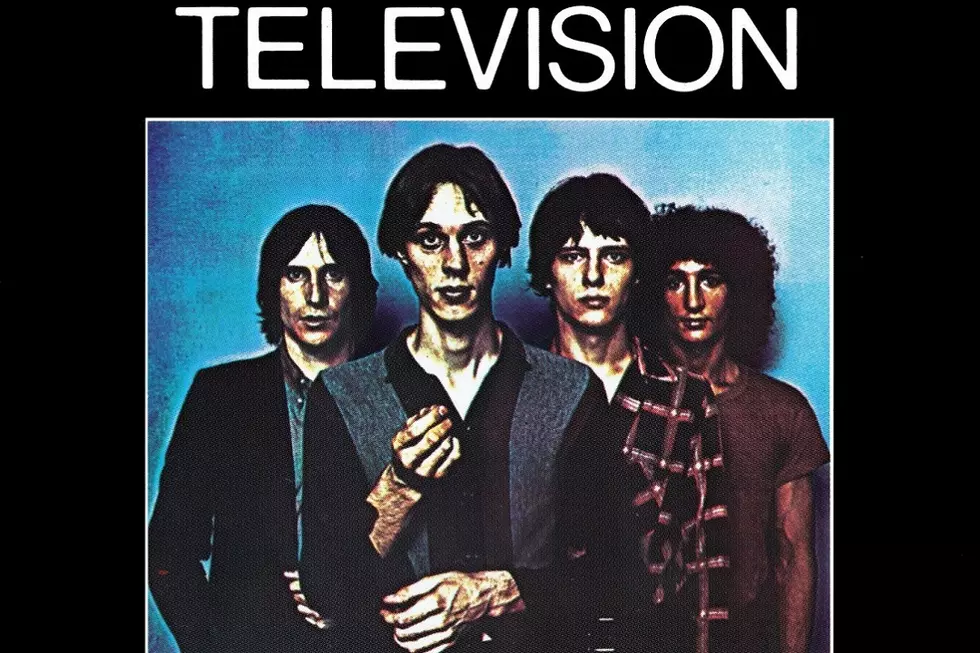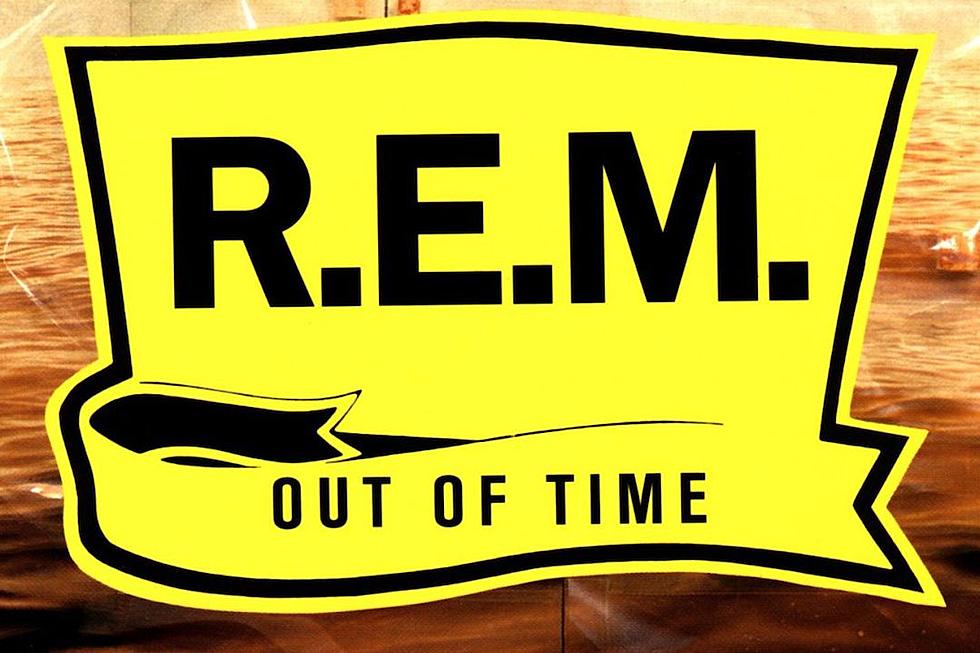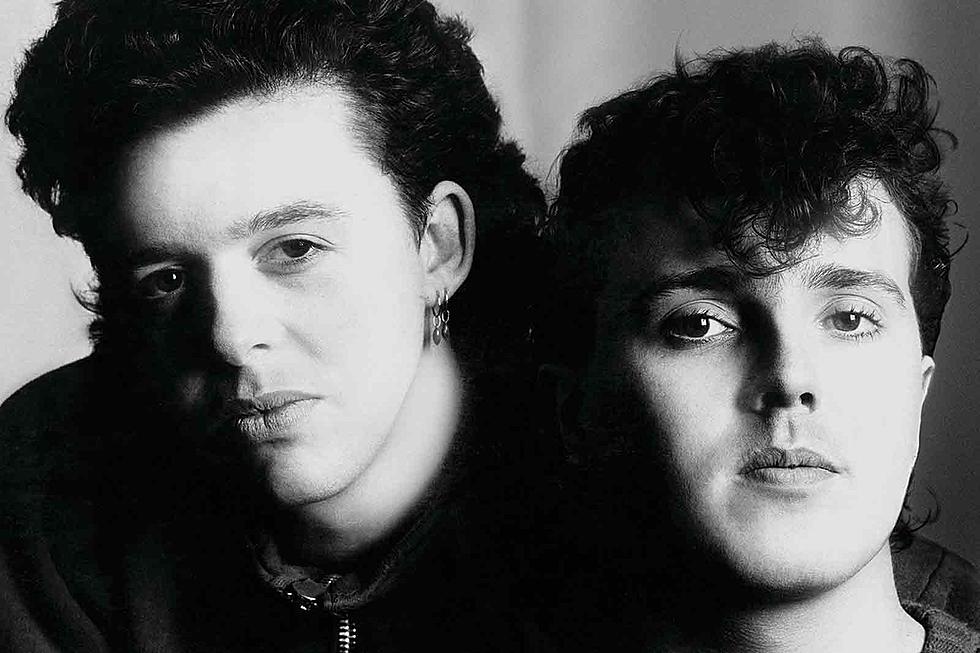35 Years Ago: The U.K. Launches the ‘Home Taping Is Killing Music’ Campaign
Label executives and artists were concerned about music piracy long before Napster made the practice a mainstream cultural concern. In fact, in the early '80s, the industry became wary of dual cassette decks—which let people dub albums onto blank cassette tapes—and stereos that let people record music from the radio or LPs.
Ground zero for the mass-market dual-cassette technology came courtesy of U.K. consumer electronics pioneer Alan Sugar. While visiting the Tokyo neighborhood of Akihabara, which is known for its cutting-edge technology and electronics, Sugar saw a Sharp-brand twin cassette deck in a store selling professional-grade equipment. A light bulb went off, and he and his company Amstrad developed and launched a more affordable, consumer version of the equipment in September 1981.
"Our national newspaper advertising was being cranked up," Sugar recalled in his memoir, What You See Is What You Get: My Autobiography. "I told Malcolm Miller to take the precaution of putting an asterisk beside the picture of the new TS55 twin cassette tower system with its 'tape to tape' logo and at the bottom of the advert, in large, bold printing, we stated, '*It is illegal to copy copyrighted material. This machine should only be used to copy material you have generated yourself.' If you picture a full-page advert in the Daily Mirror, the warning was in bold, black letters about a centimetre high.
"This was a cheeky tactic. People would read it and think to themselves, 'Hey, that's a good idea! I can use this machine to copy my mate's Abba cassette.' That was the effect the warning had, yet there was I, keeping within the law, whiter than white, telling people that the product should not be used for that purpose. Is that called reverse psychology?"
Just weeks later, on Oct. 28, 1981, British Phonographic Industry (BPI) chair Chris Wright unveiled a slogan called "Home taping is killing music—and it's illegal." Billboard reports this launch was preceded by a U.K.-based anti-taping ad campaign ("Home Taping is Wiping Out Music") endorsed by artists such as Debbie Harry, Gary Numan and Elton John. In addition, Wright wanted a tax on blank tapes to generate revenue so labels could recover supposed lost royalties. (This idea did have some precedent: Germany and Austria implemented a tax covering the video and audio industries in 1966 and 1980, respectively, while levies on media and devices are still standard practice in many countries.)
Watch Devo's Video for "Time Out for Fun"
Most notably, however, "Home taping is killing music—and it's illegal" was presented with a punk rock-looking logo featuring a skull and crossbones underneath a cassette. The U.K. branch of K-tel immediately implemented the iconography on Chart Hits '81, Volumes One and Two, to go along with a $500,000 television ad campaign. (More absurdly, Billboard reported that K-tel sales staff would put bumper stickers with the logo on their cars.) The "Home Taping Is Killing Music" logo and slogan started to appear stamped on the inner sleeves of vinyl records at other labels as well, while some pressings had the logo on the back cover.
Still, the anti-piracy campaign wasn't a slam dunk. The tax wasn't immediately pushed through in the U.K., for starters. And although the June 19, 1982, issue of Billboard details that the the country now had the world's lowest piracy rate, BPI director general John Deacon "condemned the reluctance of certain U.K. companies to make use of the 'Home Taping Is Killing Music' logo on LP sleeves."
Wright expressed similar frustrations in his 2013 book, One Way or Another: My Life in Music, Sport & Entertainment. "We weren't helped by the fact that the record companies didn't present a united front on the matter. Island Records was selling an item called 'One Plus One,' a chromium dioxide cassette which combined a pre-recorded album by an Island act on one side with the other side left blank for the consumer to use and tape whatever else they fancied. I had to persuade [Island founder] Chris Blackwell of the folly of this campaign." (In fact, in the Nov. 7, 1981, issue of Billboard detailing the "Home Taping" campaign debut, the story right next to it on page one was the U.S. launch of the 'One-Plus-One' concept.)
The dramatic tone of the campaign was also ripe for parody and opposition. A movement known as "Home Taping Is Skill In Music" arose thanks to the invention and subsequent rollout of more sophisticated cassette recorders, which allowed people to create music at home. (According to some sources, the phrase was coined by journalist Tony Horkins.) The Dead Kennedys mocked the campaign on the cassette version of its 1981 EP In God We Trust, Inc.: Side two of the tape featured the phrases "Home Taping Is Killing Record Industry Profits!" and "We Left This Side Blank So You Can Help." The metal band Venom adopted the slogan to read "Home Taping Is Killing Music—So Are Venom," while Devo used the cassette/skull-and-crossbones combo in its futuristic video for "Time Out for Fun."
As the '80s wore on, the copyright-infringement hysteria eventually died down. Not only did CDs start to supersede cassettes in popularity, but a landmark court case involving Alan Sugar, of all people, helped deflate the momentum. In 1988, CBS Songs sued Amstrad over its dual-cassette deck—and lost, after U.K. courts ruled that "whilst it is clear that the copying of copyright material without permission is an infringement in almost all jurisdictions, the provision of a service or equipment to facilitate such copying, where that service or equipment has other legitimate uses, may not be an infringement or illegal."
Listen to "Home Taping Is Killing Music"
The slogan "Home Taping Is Killing Music" remains ripe for spoofing and appropriation, however. In 2009, an electronic music label called Home Taping Is Killing Music sprang up in Scotland, while in 2010, an artist named Dan Bull spoofed the movement in an electropop song. More notably, in an example of A+ trolling, peer-to-peer file sharing service the Pirate Bay even uses the cassette logo on the sails of its own logo—a pirate ship.
The Top 40 Albums of 1986
More From Diffuser.fm









